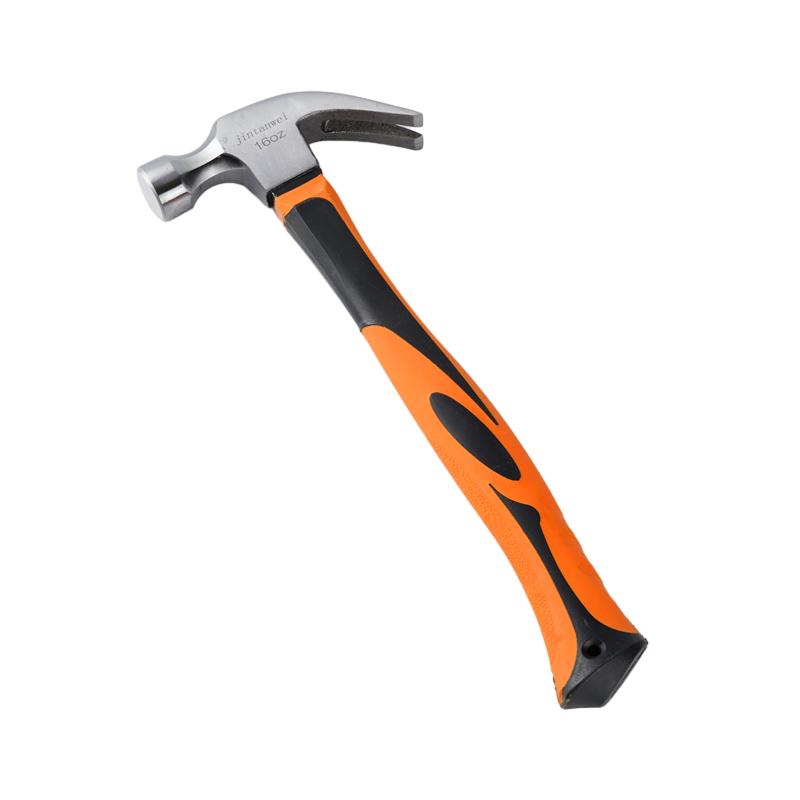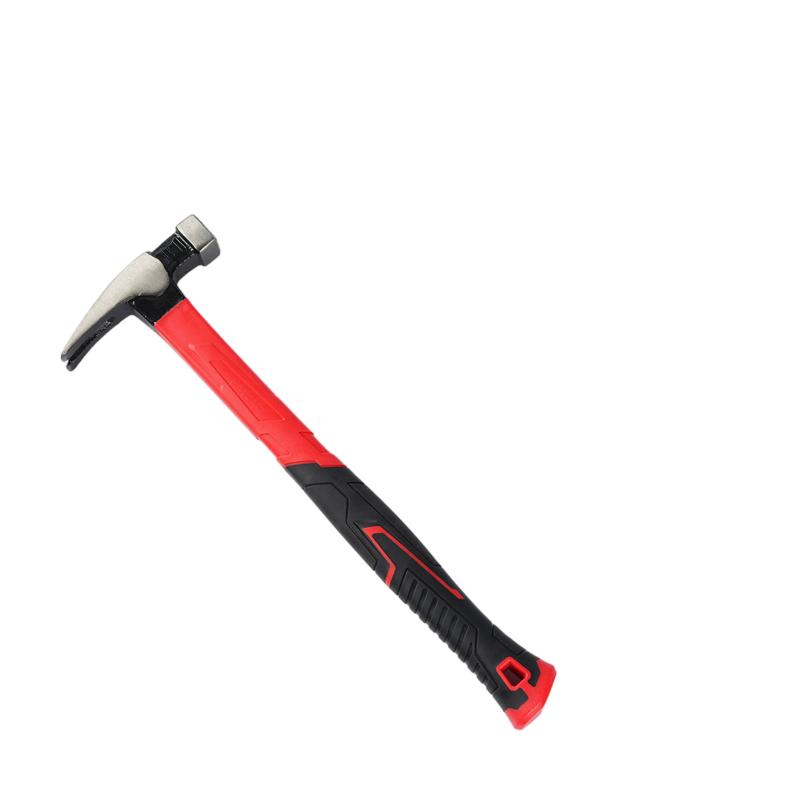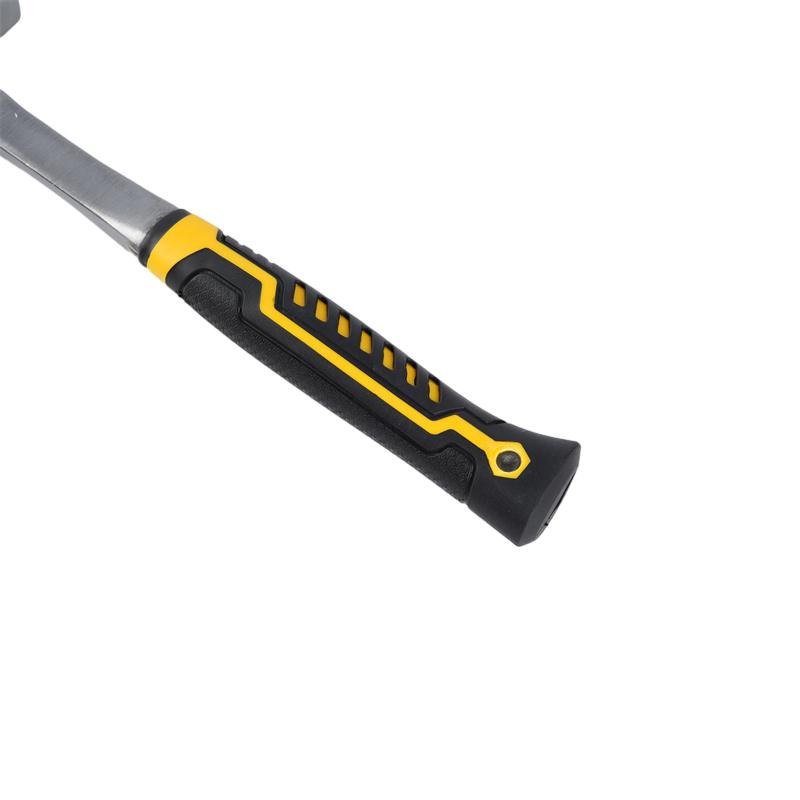Choosing the right hammer might seem simple, but the variety available can be overwhelming. Whether you're driving a single nail for a home project or managing a construction site, selecting the best hammer is crucial for efficiency and safety. This article breaks down the different type of hammer options, helping you make informed decisions and ensuring you always have the right tool for the job. Understanding your needs and the nuances of each hammer type is key to working smarter, not harder.
What exactly is a hammer, and why are there so many variations?
The hammer is one of the oldest and most fundamental tools in human history. At its core, a hammer is a hand tool designed to deliver an impact to an object. While the basic principle remains the same, the applications and materials have evolved dramatically, leading to the vast array of hammers are available today. From driving nails into wood to shaping metal, each type of hammer is specialized for efficiency and effectiveness in specific tasks. The materials used, such as the steel hammer head and the wood handle or fiberglass handle, are crucial for durability and comfort. The shape and weight of the hammer head also play a significant role in how effectively you can drive a nail or perform other tasks.
Think about the delicate work of a jeweler versus the heavy lifting of a construction worker. Both might use a hammer, but the tools will be vastly different. The jeweler might use a tack hammer, a smaller hammer for precise work, while the construction worker relies on a robust framing hammer to handle framing nails. This specialization ensures that the force applied is appropriate for the material and the desired outcome. The evolution of the hammer also reflects advancements in materials science and ergonomic design, aiming to reduce vibration and improve user comfort even when hammering nails for extended periods.
| Hammer Type | Typical Use | Key Features |
|---|---|---|
| Claw Hammer | General carpentry, nail driving/pulling | Claw for nail removal, various weights |
| Ball Peen Hammer | Metalworking, shaping | Rounded peen for forming metal |
| Sledgehammer | Heavy demolition, driving stakes | Heavy head for maximum impact |
| Rubber Mallet | Gentle impact, preventing damage | Soft head material |
| Tack Hammer | Upholstery, small tacks | Lightweight, small head |
| Framing Hammer | Framing lumber, heavy nail driving | Heavier head, often with magnetic nail starter |
The trusty claw hammer: When is this the best hammer for the task at hand?
The claw hammer is arguably the most recognizable and versatile type of hammer. Its defining feature, the claw, makes it invaluable not only for driving nails but also for pull nails. This makes it a go-to hammer for a wide variety of tasks around the home and on the job site. If you’re looking for a hammer for general repairs, hanging pictures, or basic woodworking, a claw hammer is often your best hammer. The versatility of the claw hammer stems from its balanced design, allowing for controlled swings and effective force when you want to drive a nail.
The claw hammer is a staple in any tool box. The curved claw design provides leverage for easily removing nails, while the flat strike face is designed for effectively drive the nail. Many claw hammers include features like a magnetic nail starter holds the nail head in place, allowing for one-handed operation, which is particularly useful in awkward positions. Whether you're a homeowner tackling a weekend project or a professional carpenter, a reliable claw hammer is an indispensable tool. Its design makes it efficient for both driving and nail pulling, making it a true all-rounder.

Claw design deep dive: What's the difference between a curved and straight claw?
The subtle difference between a curved claw and a straight claw on a claw hammer significantly impacts its functionality. A curved claw is the more traditional design and is generally considered better for pulling nails. The curve provides extra leverage, making it easier to extract even stubborn or deeply embedded nails. When you need to pull nails frequently, especially larger ones, a curved claw will save you effort and time. This design is a favorite among carpenters and DIYers who often need to undo their work or dismantle structures.
On the other hand, a straight claw, also known as a rip claw, is designed more for demolition work and prying. While it can still be used to pull nails, its straighter edge is more effective for prying apart boards or framing members. The rip claw hammer allows you to get into tighter spaces and apply force more directly when separating materials. For contractors involved in demolition or remodeling, the rip claw offers a valuable edge. Ultimately, the choice between a curved claw and a straight claw depends on the primary tasks you'll be performing. If nail pulling is your priority, go with a curved claw. If prying and demolition are more frequent, a straight claw is the better choice.
Estwing vs. Stiletto vs. Vaughan: Decoding popular hammer brands – which reigns supreme?
When it comes to hammers, several brands have earned reputations for quality and innovation. Estwing, Stiletto, and Vaughan are among the most respected names, each offering unique features and appealing to different user preferences. Estwing is known for its durable, metal-handled hammer designs, often forged in one piece, providing exceptional strength and reducing the risk of the head separating from the handle. Their estwing hammer products are often favored by professionals who value ruggedness and longevity. The solid construction minimizes vibration, even with heavy use.
Stiletto, on the other hand, is famous for its lightweight titanium hammer options. Titanium offers a significant weight reduction compared to steel while maintaining impressive strength. This makes swinging a hammer less fatiguing over long periods, a major advantage for framers and carpenters who use a hammer all day. While titanium hammers are typically more expensive, the reduced strain and increased swing speed can justify the cost for many professionals.
Vaughan offers a wide range of hammers, often focusing on traditional designs with hickory handles. Vaughan hammers are known for their balance and comfortable feel in the hand. Many carpenters appreciate the shock-absorbing properties of a wood handle. Vaughan also offers innovative features like the side nail puller on some models, adding to their appeal. Choosing between these brands often comes down to personal preference and the specific demands of your work. If durability is paramount, Estwing is a solid choice. For those prioritizing lightweight and reduced fatigue, Stiletto titanium hammers are excellent. If you prefer the feel of a traditional handled hammer with a focus on balance, Vaughan is a reliable option.

What makes a framing hammer essential for carpenter work?
A framing hammer is a specialized claw hammer designed specifically for the demands of framing buildings and other large structures. Several key features distinguish it from a standard claw hammer. Framing hammers typically have a heavier head, often ranging from 20 oz to 32 oz, providing more force behind each hammer strikes. This extra weight allows carpenters to drive framing nails quickly and efficiently through framing lumber. The strike face on a framing hammer is often larger, increasing the sweet spot and reducing the chance of glancing blows.
Many framing hammers also feature a magnetic nail starter. This convenient addition allows carpenters to position a nail with one hand, freeing up the other to hold the lumber. This is particularly useful when working at height or in awkward positions. The claw on a framing hammer is usually straighter and more aggressive than on a general-purpose claw hammer, making it effective for prying apart lumber and performing light demolition. While a standard claw hammer can be used for framing, the specialized features of a framing hammer significantly increase efficiency and reduce fatigue for professional carpenters who are hammering nails all day long. If you're tackling a significant framing project, a dedicated framing hammer is an investment that will pay off in time and effort saved.
Should you go titanium hammer? Understanding the benefits of titanium.
The rise of the titanium hammer has brought a new dimension to the world of hand tools. The primary benefit of titanium is its exceptional strength-to-weight ratio. A titanium hammer can deliver the striking force of a heavier steel hammer while weighing significantly less. This reduced weight of a hammer translates to less strain and fatigue on the user, especially during long days of hammering nails. For professional carpenters and framers, this can lead to increased productivity and reduced risk of injury. When swinging a hammer hundreds or thousands of times a day, the difference in weight is noticeable.
Beyond the weight advantage, titanium also absorbs vibration more effectively than steel. This further reduces fatigue and makes nail after nail more comfortable to drive. While titanium hammers come with a higher price tag compared to their steel counterparts, the benefits they offer can be significant for those who use a hammer extensively. The reduced fatigue can lead to better accuracy and fewer mistakes. However, it's important to note that some users prefer the feel of a heavier steel hammer, and the lighter titanium hammer might require some adjustment in swing technique. Ultimately, the decision to go with a titanium hammer depends on your budget and how much you value reduced weight and vibration during prolonged use.

Beyond nail driving: When is a demolition hammer or club hammer necessary?
While the claw hammer is a versatile tool, some tasks require the brute force of a demolition hammer or club hammer. These hammers are designed for heavy-duty work where maximum impact is needed. A demolition hammer, often called a sledgehammer, features a very heavy head and a long handle, allowing for powerful swings to break down concrete, drive stakes, or perform significant demolition. The sheer weight of a hammer in this category makes it unsuitable for everyday tasks but indispensable for heavy construction or demolition projects.
A club hammer, also known as a lump hammer, is smaller and more manageable than a sledgehammer but still packs a significant punch. Club hammers are often used for driving chisels, breaking up smaller concrete sections, or light demolition work. The shorter handle allows for more controlled swings in tighter spaces compared to a sledgehammer. If you're undertaking a renovation project involving breaking up concrete or driving large stakes, a club hammer is a valuable addition to your toolkit. Neither a demolition hammer nor a club hammer is designed for driving nails; their purpose is to deliver concentrated force for breaking or driving larger objects.
You can explore our range of durable club hammer options for your heavy-duty tasks.
Looking for something smaller hammer? Exploring options for delicate tasks.
Not every job requires the power of a framing hammer or sledgehammer. For delicate tasks and intricate work, a smaller hammer is often the best hammer choice. Tack hammers, for example, are lightweight hammers with small heads, ideal for upholstery work and driving small tacks or brads. Their light weight and maneuverability allow for precise placement without damaging delicate materials. Jewelers and model makers also rely on similarly sized hammers for their craft.
Another type of smaller hammer is the finish hammer. These hammers typically have a smooth, rounded face to avoid marking the surrounding wood when drive finish nails. They are lighter than framing hammers, allowing for greater control and accuracy when working on trim or delicate woodworking projects. Even within the realm of claw hammers, you can find smaller hammer options with lighter heads and shorter handles, making them easier to handle for smaller hands or less strenuous tasks. Having a selection of hammers, including smaller hammer options, ensures you always have the right tool for the precision required by the job.
What does "16oz" mean, and is a 16 oz claw hammer the right weight for you? What about a 20 oz?
The "oz" designation on a hammer, such as "16oz" or "20 oz", refers to the weight of the hammer head. This weight is a crucial factor in determining the hammer's striking force and the amount of effort required to swing it. A 16 oz claw hammer is a popular and versatile weight, often considered a good balance between striking power and ease of use for general carpentry and home improvement tasks. It's heavy enough to drive nails effectively without being overly tiring for extended use. Many DIYers and even professional carpenters find a 16 oz claw hammer to be their go-to hammer.
A 20 oz claw hammer, on the other hand, has a heavier head and therefore delivers more force with each swing. This makes it more efficient for driving larger nails, such as those used in framing. However, the increased weight can lead to faster fatigue, especially for less experienced users. Choosing the right weight depends on the type of work you'll be doing most frequently and your personal strength and comfort level. While a 16 oz hammer is a great all-around choice for a variety of home and smaller projects, if you frequently work with framing lumber and large nails, the extra weight of a 20 oz hammer might be beneficial. It's also worth considering that some manufacturers offer 16 oz framing hammer options, combining the lighter weight with features designed for framing.
You can explore our selection of robust 16oz claw hammer options.
What is the best value when selecting a hammer?
Determining the best value in a hammer involves balancing quality, durability, and price. While the most expensive hammer isn't always the best hammer for everyone, opting for the less expensive hammer might lead to frustration and the need for replacement sooner rather than later. The best value often lies in finding a hammer that meets your specific needs and is built to last without breaking the bank. Consider the materials used: a steel hammer head forged from high-quality steel will be more durable than one made from inferior materials. Similarly, a hickory or fiberglass handle will generally outlast a cheaper wooden handle.
Features like a magnetic nail starter or vibration reduction technology can add to the value, especially if they improve your efficiency and comfort. Reading reviews and comparing features across different brands and price points can help you identify the best value. Sometimes, spending a little more upfront for a reputable brand like Vaughan or even a more affordable Estwing model can save you money in the long run by providing a reliable tool that will withstand years of use. The best value is subjective and depends on your individual needs and budget, but focusing on quality materials and construction is a good starting point. Consider what tasks you'll be performing most often and choose a hammer with the features and durability to handle them effectively. For many, a well-made 16 oz claw hammer offers excellent best value due to its versatility and reasonable price point.
In summary, when choosing the right hammer:
- Consider the primary tasks you'll be performing (e.g., general repairs, framing, demolition).
- Understand the differences between claw designs (curved for nail pulling, straight claw for prying).
- Weigh the pros and cons of different handle materials (hickory, fiberglass, metal).
- Choose the appropriate weight for your strength and the size of nails you'll be driving.
- Don't underestimate the value of ergonomic features that reduce vibration and fatigue.
- Read reviews and compare features to find the best value for your needs.
By considering these factors, you can confidently choose the right hammer for any project, ensuring efficiency, safety, and satisfaction with your work.
Post time: 01-07-2025





